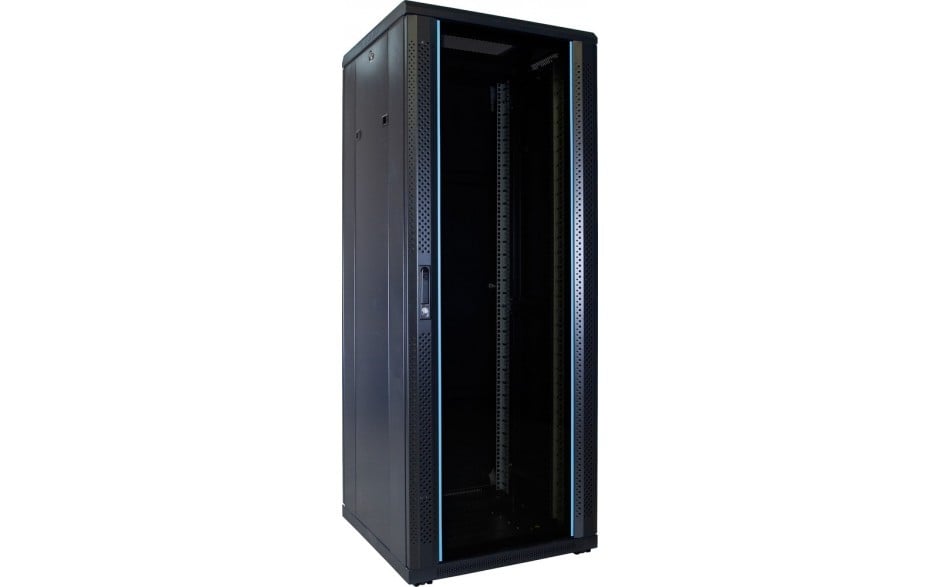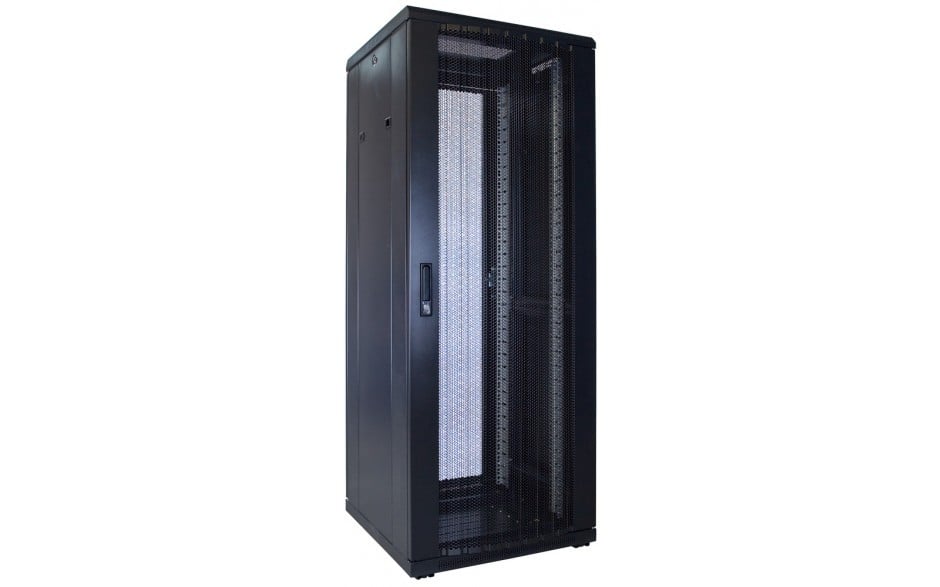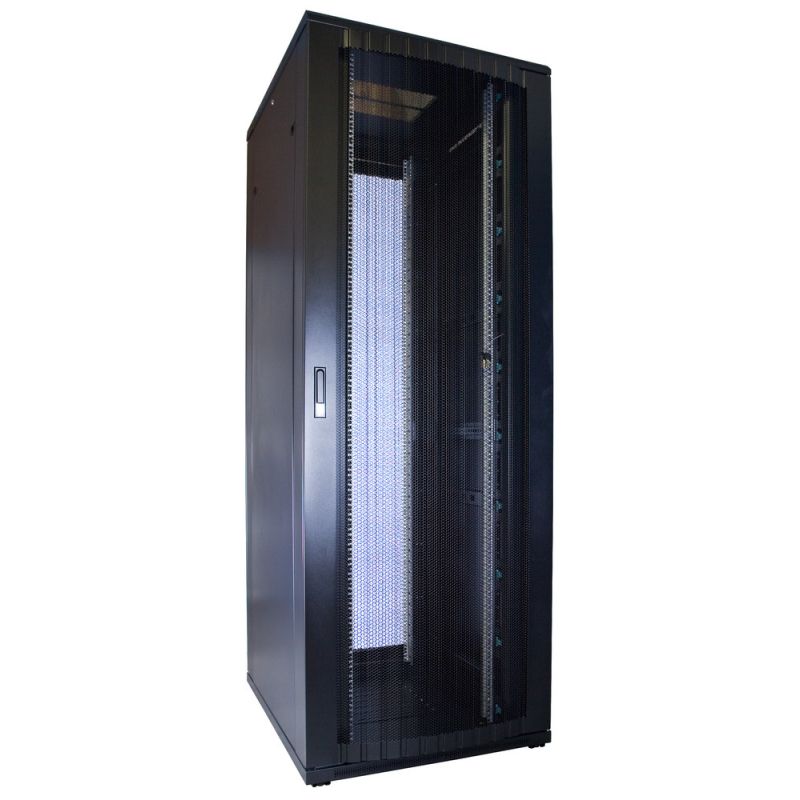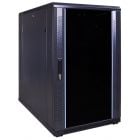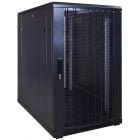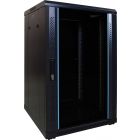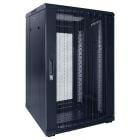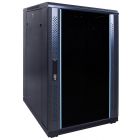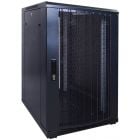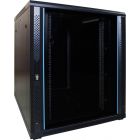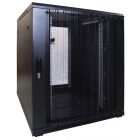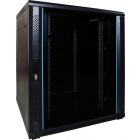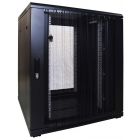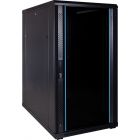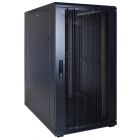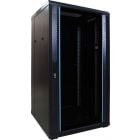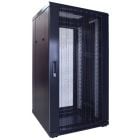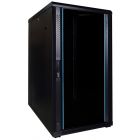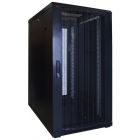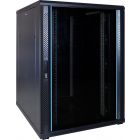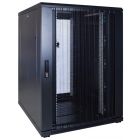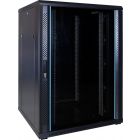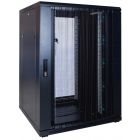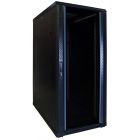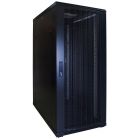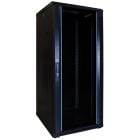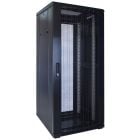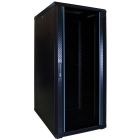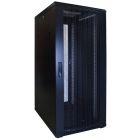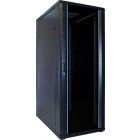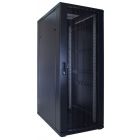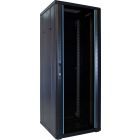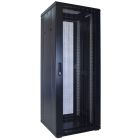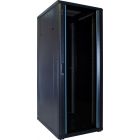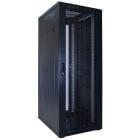When purchasing a server rack, you not only have a choice of different height and sizes but also two types of doors: a glass door or a perforated door. But which one should you choose? What are the differences? And how does this choice relate to network equipment? In this article, we provide tips for choosing the right door because it's more crucial than you might think.
When you buy a server rack, the aim is to store all equipment centrally and securely. By centralizing everything around the network, it remains organized and accessible to employees, a crucial step towards a well-functioning IT network.
In the server rack, you place everything related to the IT network, including routers, servers, and lots of cables. When these devices are on, they generate heat. This heat needs to exit the server rack to prevent damage to the equipment. This is achieved either through built-in fans or perforated doors.
Extra tip: Organize all incoming and outgoing cables with colored cable ties for a good overview or use our high-quality UTP cabling.
Server Rack with Glass Front Door
The first option is a server rack with a glass front door. Buying a patch rack with a glass door has three advantages:
Sleek Design:
The rack has a glass front door and a rear door of standard sheet steel. The door has a sturdy steel frame with small ventilation holes. In between, there is a clear glass panel, giving the rack a sleek design.
Sound-Dampening:
A glass door also dampens the sound of equipment. This allows placing a server rack in an open-plan office or other work environments without causing disturbance.
Less Dust:
Another advantage of glass doors is that considerably less dust enters the server rack compared to a rack with perforated doors. This saves cleaning efforts.
Ventilator for Overheating:
As mentioned earlier, some devices generate a lot of heat. To cool such a rack with a glass front door, you can use a built-in fan unit. The significant advantage is that you choose a rack with a sleek design, sound-dampening, and still allow cooling of the equipment.
If your equipment generates minimal heat, a fan in a server rack with a glass front door is generally not necessary.
Server Rack with Perforated Front Door
The second option is a server rack with a perforated front and rear door. These are metal doors with a pattern of small holes, creating an "open" rack where heat can easily escape.
The major advantage of buying a patch rack with perforated doors is that natural cooling and ventilation occur through the front and rear doors. Therefore, you don't need an additional fan. However, more dust enters the rack and settles on the equipment. This rack is also less sound-dampening. But if the server rack is in a closed space, this is less important.
Dangers of High Temperature in the Server Rack
It's crucial that heat can leave the server rack. Servers, for example, produce a lot of heat and can overheat. When this happens, the entire IT network can go down temporarily. This poses a danger to the organization and brings an unwelcome cost.
Pros and Cons at a Glance
We like to support as best we can when making a choice between glass or perforated doors. Therefore, here is a handy table with all the advantages and disadvantages.
|
Feature |
Glass door |
Perforated door |
|
Natural ventilation |
Somewhat |
Yes |
|
Soundproofing |
Yes |
No |
|
Prevents dust |
Yes |
No |
Depending on personal preference and the functional operation of the server rack, you can make a good choice between glass or perforated doors using the above properties.
Server Rack with Split Rear Doors
Another variant of the server rack is a patch rack with split doors. Split doors consist of two perforated parts. These are 800 mm wide patch racks with a height of 42U or 47U. Racks with split rear doors are an excellent solution for larger companies where a dedicated IT/server room is often set up.
Space Efficiency
In a server room, there are often more IT-related items. Therefore, the available space must be efficiently organized. This is possible because racks with split doors can be placed closer to the back wall. This is more challenging with regular server racks with rear doors that are 80 cm wide. Split doors consist of two parts, meaning the doors take up less space when open.


